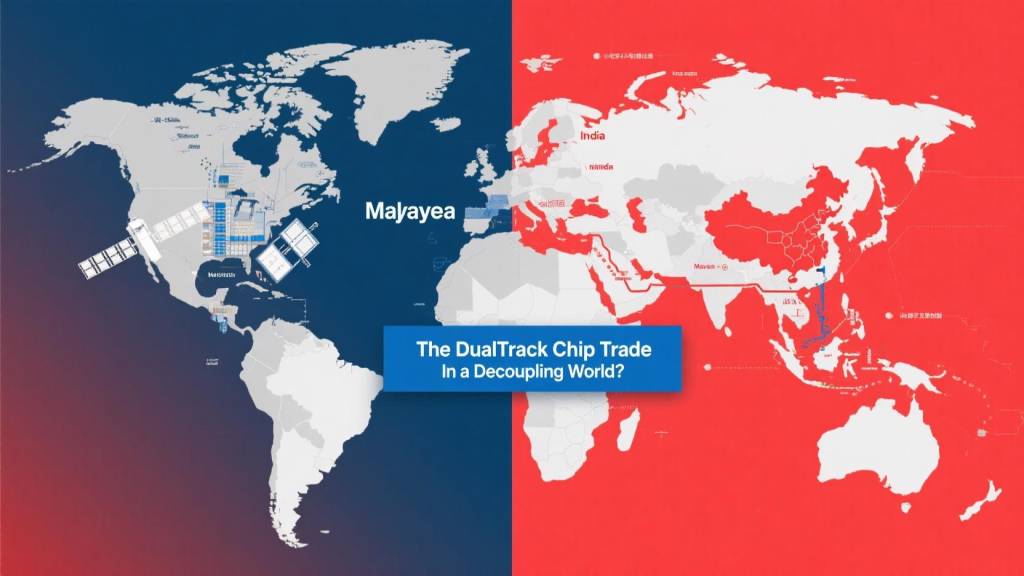How Semiconductors Became Both Strategic Assets and Trade Dividers
In 2025, semiconductors are no longer just essential components — they’re geopolitical instruments. As the U.S.–China tech rivalry deepens, a dual-track global chip ecosystem is emerging, splitting the world into two supply networks with distinct standards, partners, and technology tiers.

Track One: The Western-Led Stack
The U.S., Japan, South Korea, the Netherlands, and key EU states now dominate what’s considered the “premium chip chain.” This includes:
Leading-edge logic chips (<5nm) for AI, cloud computing, and defense.
Export controls on EUV lithography, led by ASML and Tokyo Electron.
Joint investment in “Chip4 Alliance” fabs across Arizona, Dresden, and Osaka.
These chips rarely cross into China, with licensing now tightly monitored under frameworks like CHIP-SAFE (2024).
Track Two: The Parallel Asia-Centric Stack
In response, China has accelerated its push toward self-reliance. Through firms like SMIC and YMTC, it is building out a separate stack:
14nm and above nodes for automotive, appliances, and mid-tier smartphones.
Heavy investment in domestic DUV tools, packaging, and memory chips.
Trade partners include Russia, Iran, Pakistan, and segments of Southeast Asia and Africa.
This stack prioritizes availability over cutting-edge performance, but serves over 60% of global mid-range electronics markets.
Supply Chains are Splitting — But Not Severing
Despite decoupling, some bridges remain. ASE in Taiwan and TSMC’s legacy fabs still serve both ecosystems via carefully ringfenced operations. Meanwhile, countries like India and Malaysia are positioning themselves as “neutral packaging hubs,” offering backend processing to both sides.
Implications for Global Trade

Export compliance is becoming a daily operational risk.
Firms are designing “dual-source” products — one for Western markets, one for China.
Licensing chips across blocks now involves multi-jurisdictional approval.
“It’s no longer just a chip — it’s a passport,” says Clara Jensen, policy advisor at the WTO’s Tech Trade Unit.
Key Takeaway
The semiconductor industry now defines the global trade split. Companies and countries that can navigate both tracks — without violating either — may become the power brokers of this new techno-economic order.
